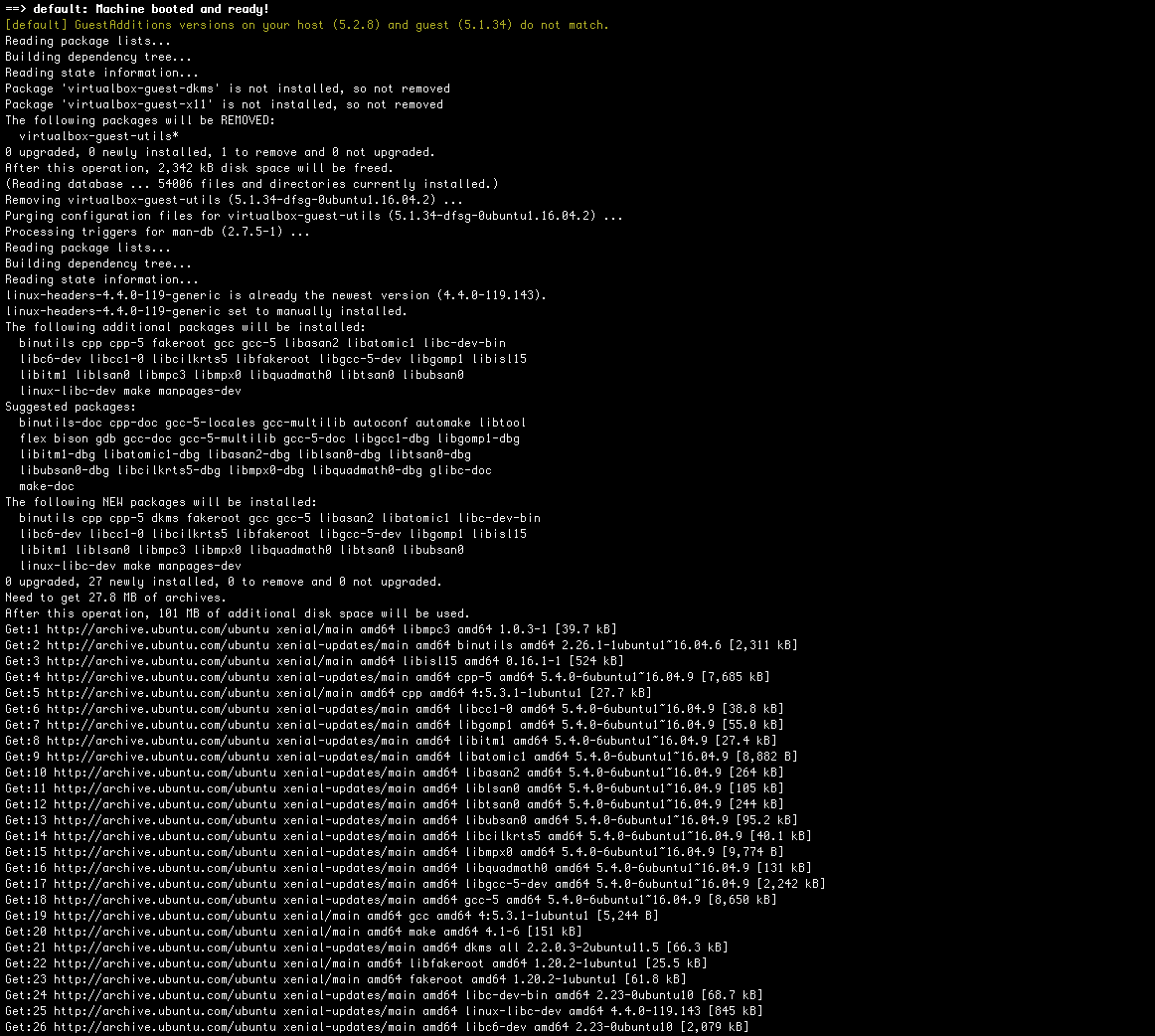

# Note: This will enable public access to the opened port # config.vm.network "forwarded_port", guest: 80, host: 8080 # Create a forwarded port mapping which allows access to a specific port # within the machine from a port on the host machine and only allow access # via 127.0.0.1 to disable public access # config.vm.network "forwarded_port", guest: 80, host: 8080, host_ip: "127.0.0.1" # Create a private network, which allows host-only access to the machine # using a specific IP. In the example below, # accessing "localhost:8080" will access port 80 on the guest machine. # config.vm.box_check_update = false # Create a forwarded port mapping which allows access to a specific port # within the machine from a port on the host machine. If you disable this, then # boxes will only be checked for updates when the user runs # `vagrant box outdated`.
VAGRANT COMMANDS UPDATE
# config.vm.hostname = "new-hostname" # Disable automatic box update checking. config.vm.box = "hashicorp/bionic64" # Change the hostname from vagrant. # Every Vagrant development environment requires a box. # For a complete reference, please see the online documentation at #. nfigure( "2") do |config| # The most common configuration options are documented and commented below. Please don't change it unless you know what # you're doing. The "2" in nfigure # configures the configuration version (we support older styles for # backwards compatibility). Vagrant suspend causes the content of the RAM inside our VMs to be saved to our computer’s drive.# -*- mode: ruby -*- # vi: set ft=ruby : # All Vagrant configuration is done below. By using vagrant suspend we can cause the VMs to be suspended so we can quickly get them back up and running the next time we need them. This causes us to have to completely start up the VMs the next time we need to use it and we lose our place in our work. Vagrant halt completely shuts our development environment off. Provisioners marked to run always will still run.

Run `vagrant provision` or use the `-provision` => default: Clearing any previously set forwarded ports. => default: Attempting graceful shutdown of VM. This is done using the vagrant halt command. Now that we’ve powered on our VM we need to be able to turn it off. By default the name is based on the directory and the name of the VM inside our Vagrantfile. If we look in VirtualBox at this point we can see that our VM has been created and is running. => default: Checking for guest additions in VM. Vagrant will automatically replaceĭefault: this with a newly generated keypair for better security.ĭefault: Inserting generated public key within guest.ĭefault: Removing insecure key from the guest if it's present.ĭefault: Key inserted! Disconnecting and reconnecting using new SSH key. This may take a few minutes.ĭefault: Vagrant insecure key detected. => default: Running 'pre-boot' VM customizations. => default: Preparing network interfaces based on configuration.ĭefault: 22 (guest) => 2222 (host) (adapter 1) => default: Clearing any previously set network interfaces. => default: Setting the name of the VM: our-awesome-project_default_1610932671808_5447 => default: Checking if box 'generic/ubuntu2004' version '3.1.22' is up to date.
VAGRANT COMMANDS MAC
=> default: Matching MAC address for NAT networking. => default: Importing base box 'generic/ubuntu2004'.

=> default: Successfully added box 'generic/ubuntu2004' (v3.1.22) for 'virtualbox'! => default: Adding box 'generic/ubuntu2004' (v3.1.22) for provider: virtualboxĭownload redirected to host: vagrantcloud-files-production.s3.ĭefault: Calculating and comparing box checksum. => default: Loading metadata for box 'generic/ubuntu2004' => default: Box 'generic/ubuntu2004' could not be found. Bringing machine 'default' up with 'virtualbox' provider.


 0 kommentar(er)
0 kommentar(er)
